Gardena Sileno Life. Subject cried as he gave away
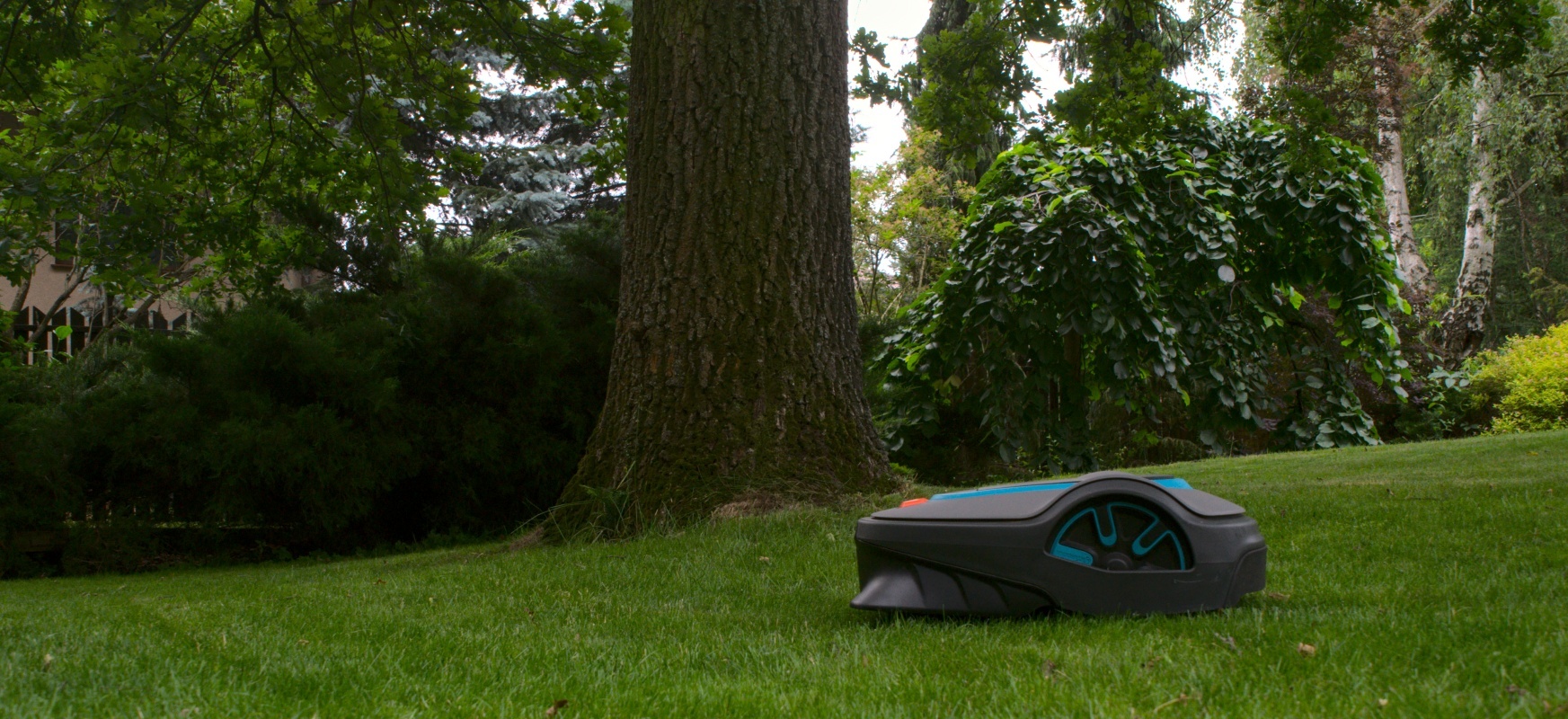
I have been tempted for a long time by this vision: lying on a deck chair with a drink in one hand and a book in the other, I read lazily when a small robot mows the grass for me in the garden. The vision, though sweet, raised concerns - is it too expensive? Does the robot require constant cleaning? What happens to the grass? Will my dogs not eat it or, worse, the robot will not mow my somewhat gaping dogs? So when the editorial team was looking for someone to test Gardeny Sileno Life, I quickly raised my hand.
TL; DR: Subject shed tears as he returned.
Gardena Sileno Life looks like the body of a traditional vacuum cleaner. The robot has been designed so as not to be too conspicuous and only the orange stop sign and turquoise accents break the neutral gray of the housing and make it stand out from the surroundings. It weighs 7.3 kg, so it is quite easy to move or turn it around preparing for cleaning. On the back, hidden under a plastic cover, there is an LCD panel. It is matte and bright enough that you can easily read what is displayed on it even in bright sunlight. This is where we enter the PIN code that the mower robot secures, there we also set the mowing schedule and enter data on the surface and shape of the lawn.
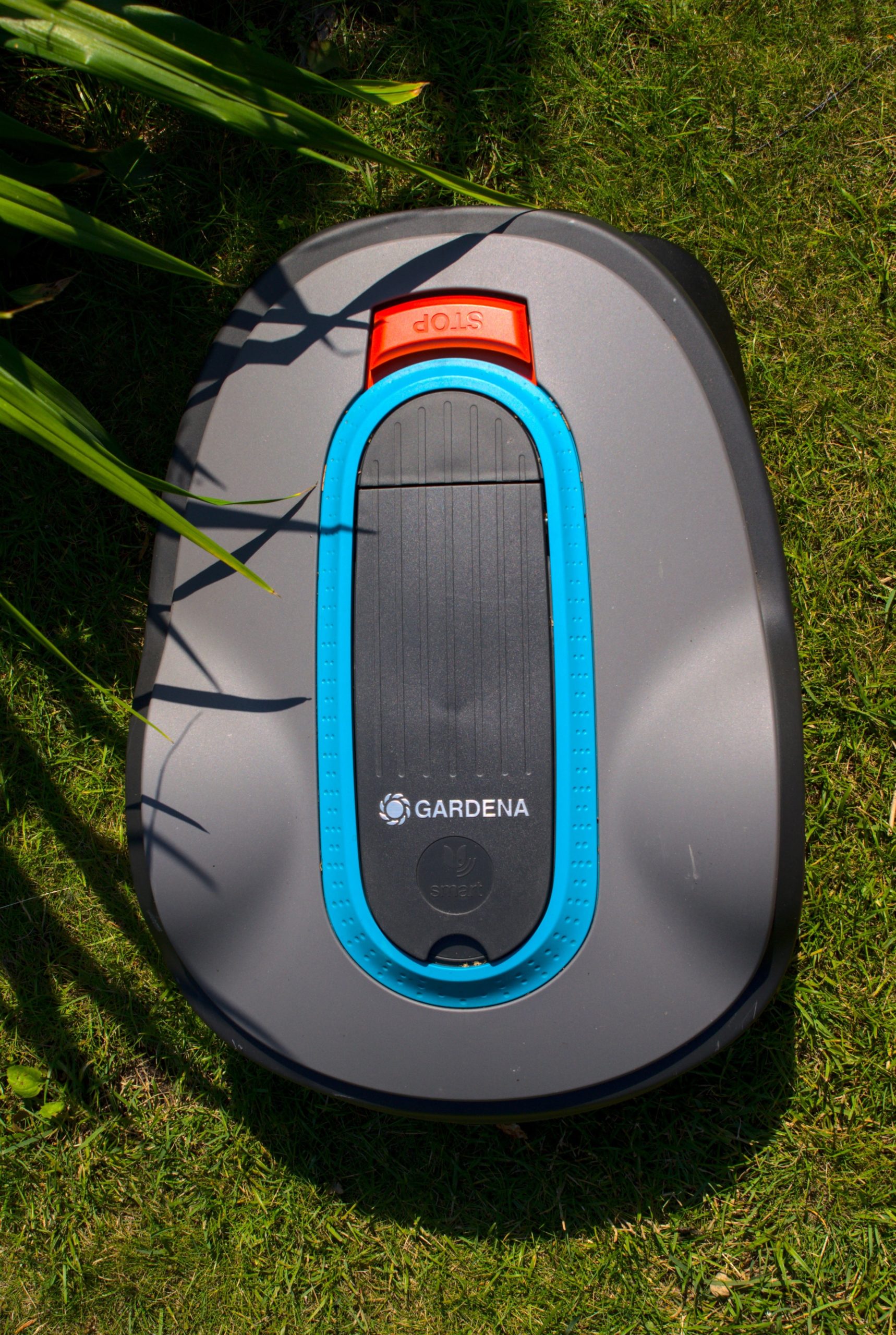
Difficult have a nice start. Preparation for installing the cutting robot.
The Gardena Sileno Life robot, which I got for testing, can work on an area of up to 1000 m2, my parents' garden, in which the robot worked bravely, has just such a lawn, but for testing we decided to spread it only on half the terrain to better compare the effects mowing the robot with the effects of a conventional two-legged protein mower. There was a slight rise on the site, but it was gentle enough that it was virtually imperceptible to the robot, however, the manufacturer promises that these models of the mower robot can cope with hills with a slope of up to 35 percent.
The size of the lawn, its complexity, the occurrence of any hills and other obstacles are one of the most important parameters that must be taken into account when choosing a mower robot for the garden. Once we have our desired model, we can go to the installation And here in my case the stairs began.
I will not beat around the bush - after reading the instructions I was terrified. Seriously, from the state of "no such things with my brother-in-law" I went smoothly pulling my hair and whispering in dismay "what? but what is the bottom of the work area? " The instruction manual is the weakest part of the set and instead of simplifying installation, it makes it more difficult. Fortunately, you can deal with it in two ways.
However, before I gave myself a completely natural gray dyeing, I called the person who professionally installs these devices in the garden. It turned out that YouTube videos published by the official Gardena Poland profile will guide us much better through the installation process. The manufacturer's website also has films in English that explain everything clearly. Therefore, it is better to treat illegible instructions as a help and not as the main source of information. The official YouTube channel is better than her - just a sign of the times.
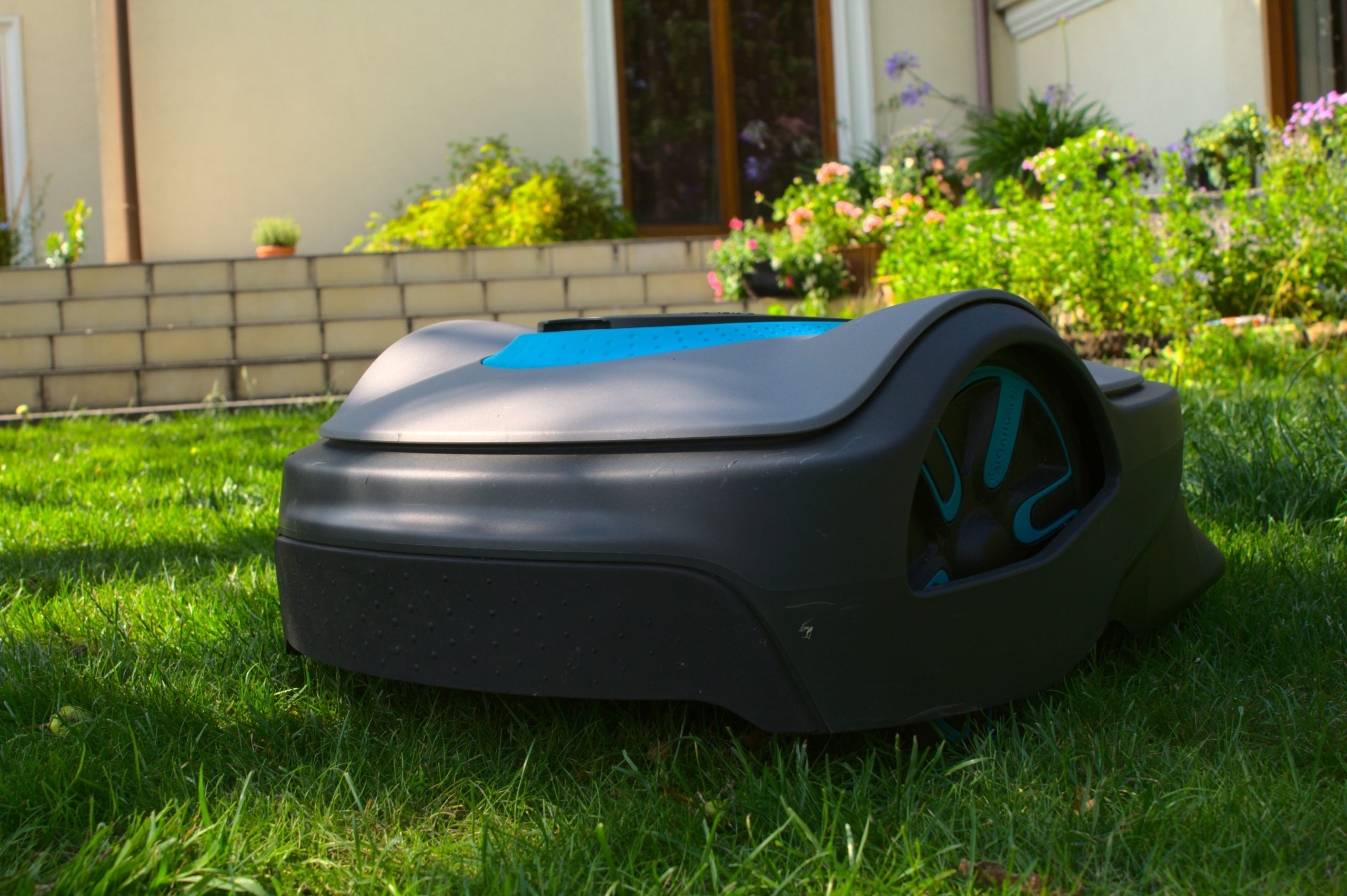
After watching the movies, we can only really have doubts about where to place the dock, i.e. the place where our robot will be able to park, rest and gain energy. If our garden resembles a square, rectangle or even the letter U, there should be no problems, but if trying to determine its shape, we start with a prolonged "e", we use a lot of "such a little" for the description, and end with "and then it turns into ... "we may have a problem. The robot can cut and reach everywhere, but you will have to count a bit more for designing the distribution of cables before installation. Fortunately, Gardena comes out with owners of bizarrely designed lawns with help. Every customer can send a plan of their garden to the company, and there employees will draw for free where they should be laid cables, where to make any sheds and where to place the docking station.
When laying cables, it is worth reconciling immediately with the idea that we will probably have to make minor adjustments after a while and the cables will move here and there. However, if we stick to the recommendations, these will be only minor changes, not sudden cable revolutions.

Of course, there is also a completely effortless option - you can simply order the installation together with the robot. It will be an additional cost, but it will save us breaking our heads over the instructions and a few hours of laying cables in the (large) garden. However, if we want to save or this type of work just entertains us, then nothing prevents you from installing the robot yourself. If I succeeded, you will succeed (at most you will start looking for ways to fight premature gray hair).
Not as scary installation as it is (in the instructions) they paint.
In practice, installation is much simpler than the user manual could suggest, but it is time consuming with a large garden. You need to lay two cables - limiting and supplying and either dig them in or nail them to the lawn with pins. The latter has the advantage that you can then deeply scarify or aerate this lawn without fear that any important cable will cut.
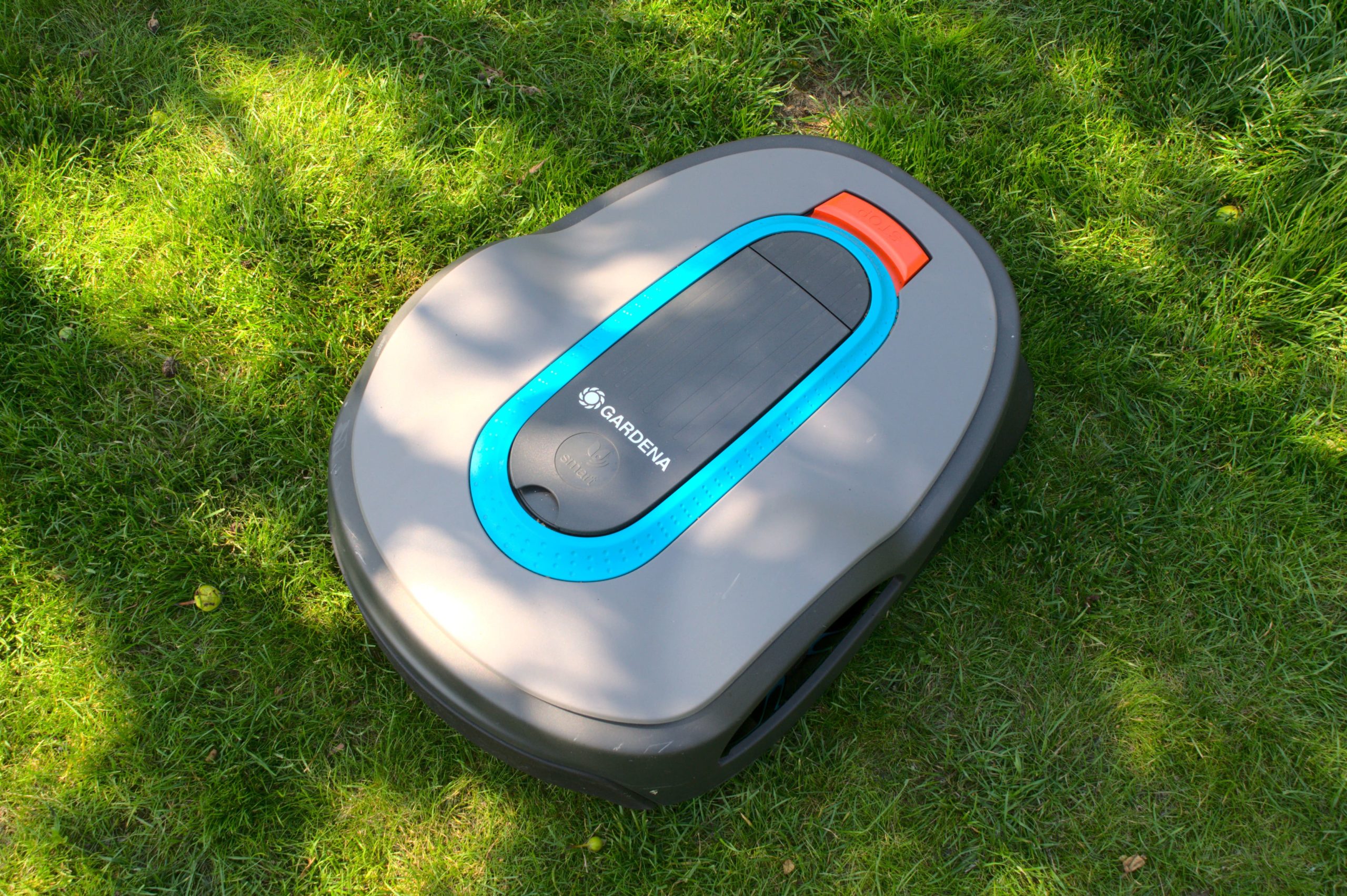
The boundary cable must be used to enclose the entire area where the robot is to ride, and to designate possible areas that it should not enter - rebates, ponds, trees with protruding roots (the robot simply bounces off ordinary trees without doing them or itself damages). The guide cable needs to connect the base to the farthest place in the garden, creating a path that will allow the robot to return to the charging station faster when it starts to run out of energy. This cable also allows you to send the robot to a designated place in the garden so that it starts working from time to time.
The good news is that, in practice, laying cables is much simpler than it would appear in the operating instructions. I chose the version for a bit less diligent, i.e. the way number two. I dug the cable only in places where the bumps seemed disturbingly large to me, and the cable stuck out above the ground. I was afraid that the mowing robot would invade him and cut them by himself. I was dreaded by another reviewer who wrote that this adventure had happened to him several times. So I dug in a bit of the power cable, but the entire one was released only on the pins and I waited with my soul on my shoulder, planning how to cut these cables together (fortunately, special connectors are included in the set). Nothing like that happened happily. The robot happily sneaked along the cables, mowing the grass, not eating them (once outside the grass he mowed the soft toy, but my dog gave it to him, so I don't blame the robot). At the same time, either I just really laid them out neatly, trying hard so that everything was properly stretched, or helped by the fact that I was mowing mainly at the maximum height of the blades.
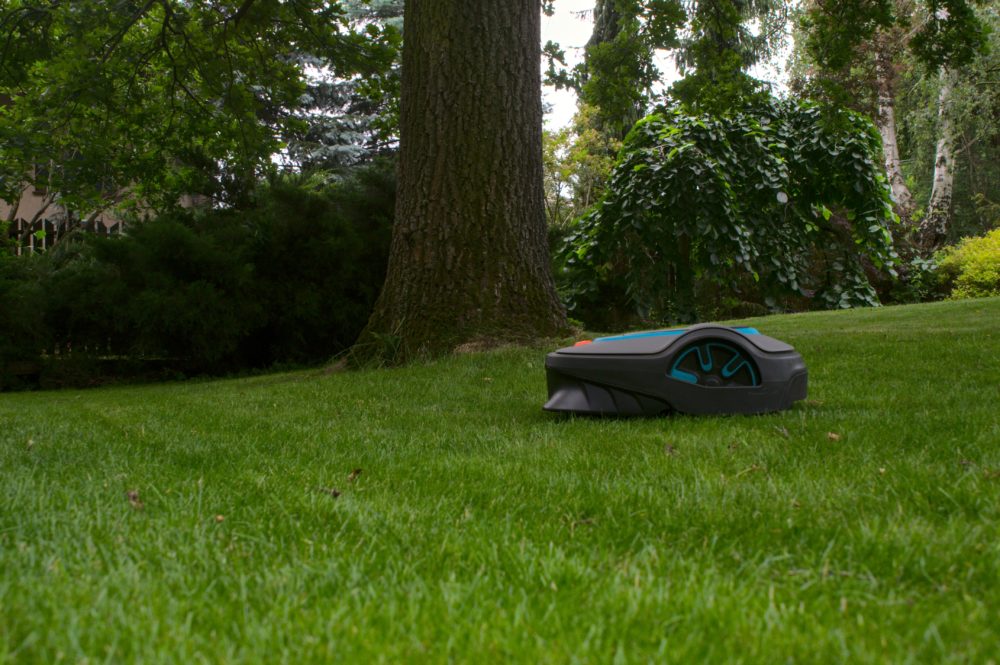
There is Smart in the name, i.e. there is an application.
The robot can be controlled either from the level of the panel located on its back, or using the application. The one that is worth emphasizing is transparent, simple and ... quite poor. It can be conveniently set working areas, i.e. lawn sections separated by narrow (60 to 150 cm) corridors. Our robot can also be hibernated remotely, which will stop his work. It can make the robot's work dependent on the weather forecast, although it is worth noting that it can also work in the rain. You can also conveniently change the device's operating schedule, i.e. determine what hours it will travel and what days it will leave free. At the same time, the manufacturer has set rigidly that the mower robot should always drive at least 5 days a week and this cannot be reduced, you can only increase it to 7 days.
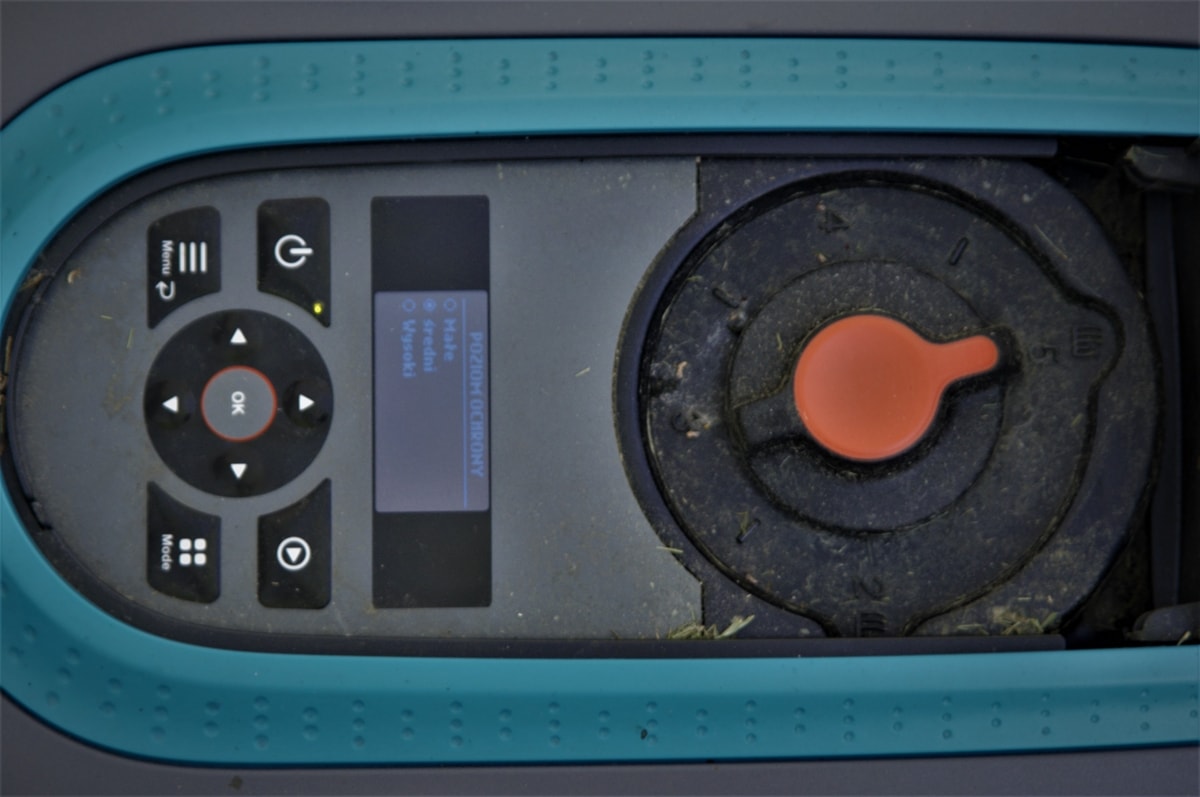
And that's all. The application does not so much add a function to the robot or allows us to better monitor its work, but rather is an extension of the control panel. I have some reservations about the last one. I understand the problem with long Polish words and the need to use aberrations to stuff them on a small display, but it's a little consolation when I don't know what to set up properly without looking into the instruction manual, which is also not well written. Fortunately, our interaction with the panel is limited and usually boils down to entering a PIN code to it, which unlocks the device after we unplug it or pick it up.
How does the cutting robot work in practice?
First of all, this solution saves time - the larger the lawn, the more. With a large lawn, after which you need to mow with the mower for at least an hour, the difference is huge and for this you can love this solution. A small robot quietly undercuts, and we enjoy our free time and spend it on more pleasant things. The mowing robot is a quite misleading name for this device, because it does not mow the grass, but rather cuts and mulches it systematically. Tiny grass cuttings fall on the lawn, this one absorbs them, and we do not have to worry about raking or emptying the basket, or when the garbage truck arrives to take sackcloth with kilograms of cut grass.
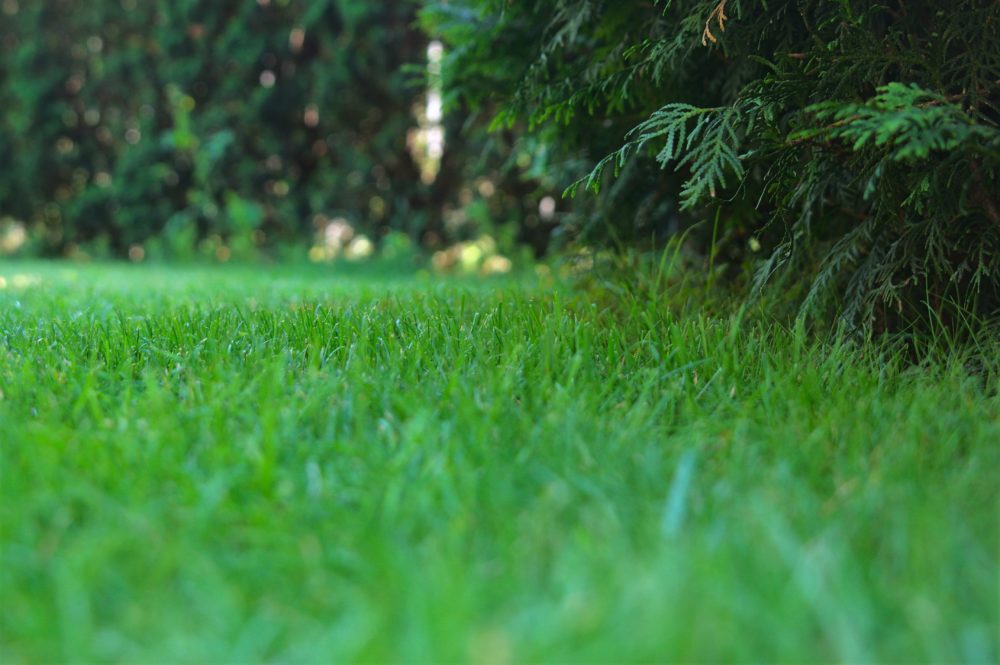
It is worth noting that Gardena Sileno Life cuts grass randomly on the lawn. If someone does not like the belts that remain after driving on the grass with a mower, you will certainly appreciate this solution. In practice, after just a few days everything is evenly mowed, the robot reaches everywhere and undercut everything. The manufacturer ensures that thanks to the SensorControl system the robot adjusts its working time to the rate of grass growth, so the mower does not drive senseless if it does not have to. Fans of mower engine roars may also be disappointed. The noise level of the robot according to the manufacturer's declaration is 58 dB, and although I admit that I did not check these measurements, I must admit that the device is so quiet that it is easy to forget that it works at all.
As for the effects of the robot's work, it's really good. I have one rather specific reservation. My parents' garden lies on the sands, so it endures drought extremely badly - water passes through it. This year the weather was not good. May was dry and cold at night, we did not want to irrigate it excessively during drought, so as not to waste water, so the grass grew extremely badly. In this case, we set a very high mowing on a regular mower. At Gardena Sileno, the highest mowing setting (50 mm) is still too low for us, so that it is not visible that the lawn is dry in sunny places. The mowing in shady places is completely different, there the manufacturer's promises have been fully fulfilled and a green carpet pleasing to the eye (and bare feet) has been created.
I was also surprised that there were virtually no problems with the robot, even though our lawn was probably rolled up recently by my grandfather in the 1980s and is therefore largely made up of smaller or larger bumps. It is worth emphasizing at this point that if we leave the robot alone on the plot, and the weather decides to surprise our frosts, the built-in low temperature sensor will stop him from going to work, protecting him and the grass.
Robot mower versus dogs.
I was a bit afraid of the robot mower colliding with our girls. Older bitch does not cause any problems, because it is from these, let's put it, very cautious and escapes from the room as soon as she sees a vacuum cleaner heading towards her. Young, on the other hand, is a puppy and, like a kid, he is not afraid of anything, and her world is divided roughly into licking items and biting items. An ordinary lawnmower usually barkes for the first dozen or so minutes, lying on the path of the mower, dodging and giving the general impression that it is having fun "helping" in maintaining the lawn. So the first few times we released the robot under supervision to look at its interactions with dogs. First, there was barking and encouragement to play, but the robot could not be persuaded to joint password, so the dog finally gave up. In the end, the Seagull (puppy) began to ignore the robot so much that he got into it, when her back turned thoughtful, contemplating the beauty of the world (guard dog, ladies, always vigilant, always at the station). The dog jumped in surprise, the robot bounced and only I ate more fear than it was worth. In Sileno, the blades do not protrude enough to reach something they bump into, and if they invade something, they hide. This has its pros and cons - the robot is not able to mow close to obstacles, because the blades are too far, but it is easier to avoid accidents or damage to the blades. For me, the latter is more important, especially for dogs and children.
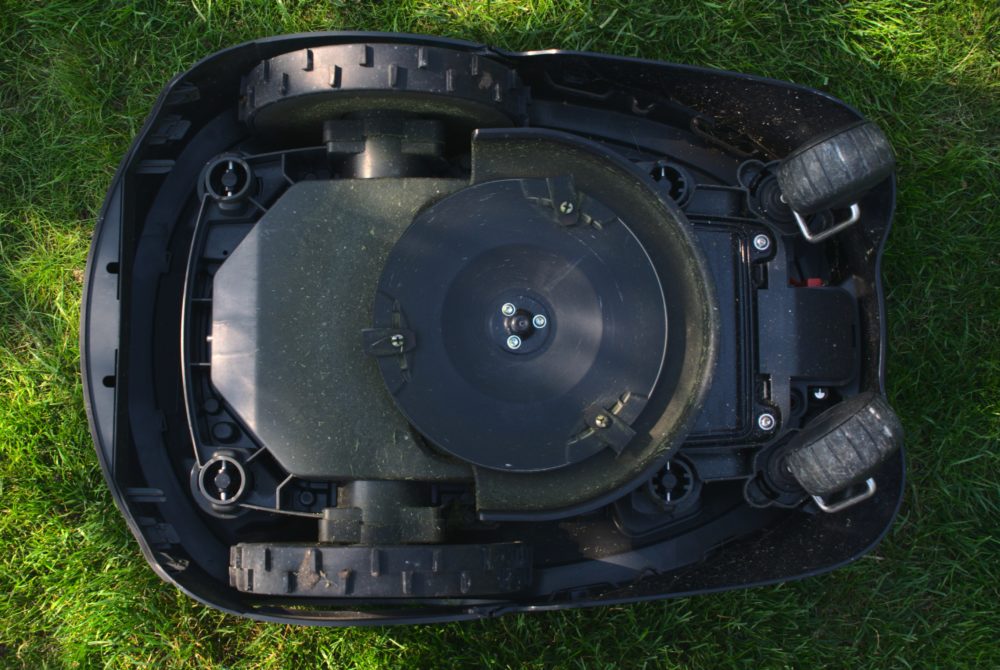
There are only two potential problems with dogs. First of all, although I am not convinced if the soil should be mulched with pieces of stuffed animals, my dog experiments with this solution and sometimes tosses his toys to the robot. Secondly, if we staple and do not clean up the dog poop, which was kindly done in the garden instead of on a walk, the robot will also go over it and get all stung. Both problems are easy to solve. Sileno is fully waterproof, so washing the robot is very easy and can simply be treated with a hose from a safe distance if an unpleasant situation occurs. However, it's better to avoid it and just make a small walk before the robot goes to work and peek if there is any surprise lying on the grass.
So how to take or not take? As always - it depends.
The mowing robot has the advantage over us that there is no allergy, it does not catch a cold, it does not sweat and does not grumble for a month, that today it is his legs that hurt and certainly slants tomorrow. It is easy to use and clean and requires a minimum investment of time compared to a regular lawn mower. The lawn keeps itself well in shape and we can save time with our family. For the Gardena smart Sileno life 1000 set, i.e. the one that I got for testing, you have to pay approx. PLN 5,600, in the version without the smart addition, i.e. without the application, approx. PLN 5,000. Whether we think it is expensive, cheap or just right depends on how much we value our free time and how much we weigh regular walking behind a regular lawn mower, and then getting rid of grass.
* The material was created in cooperation with Gardena
Gardena Sileno Life. Subject cried as he gave away
Comments
Post a Comment